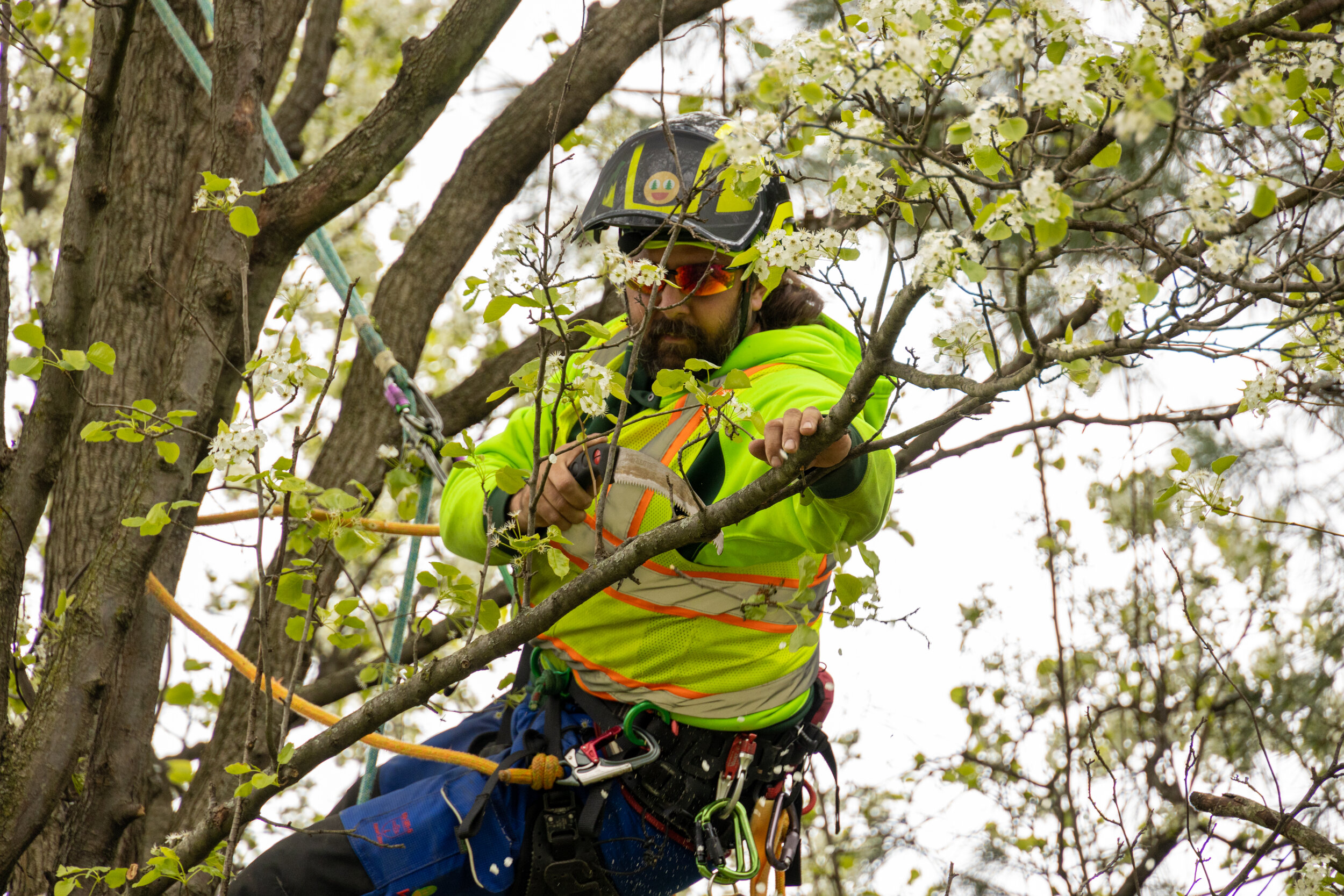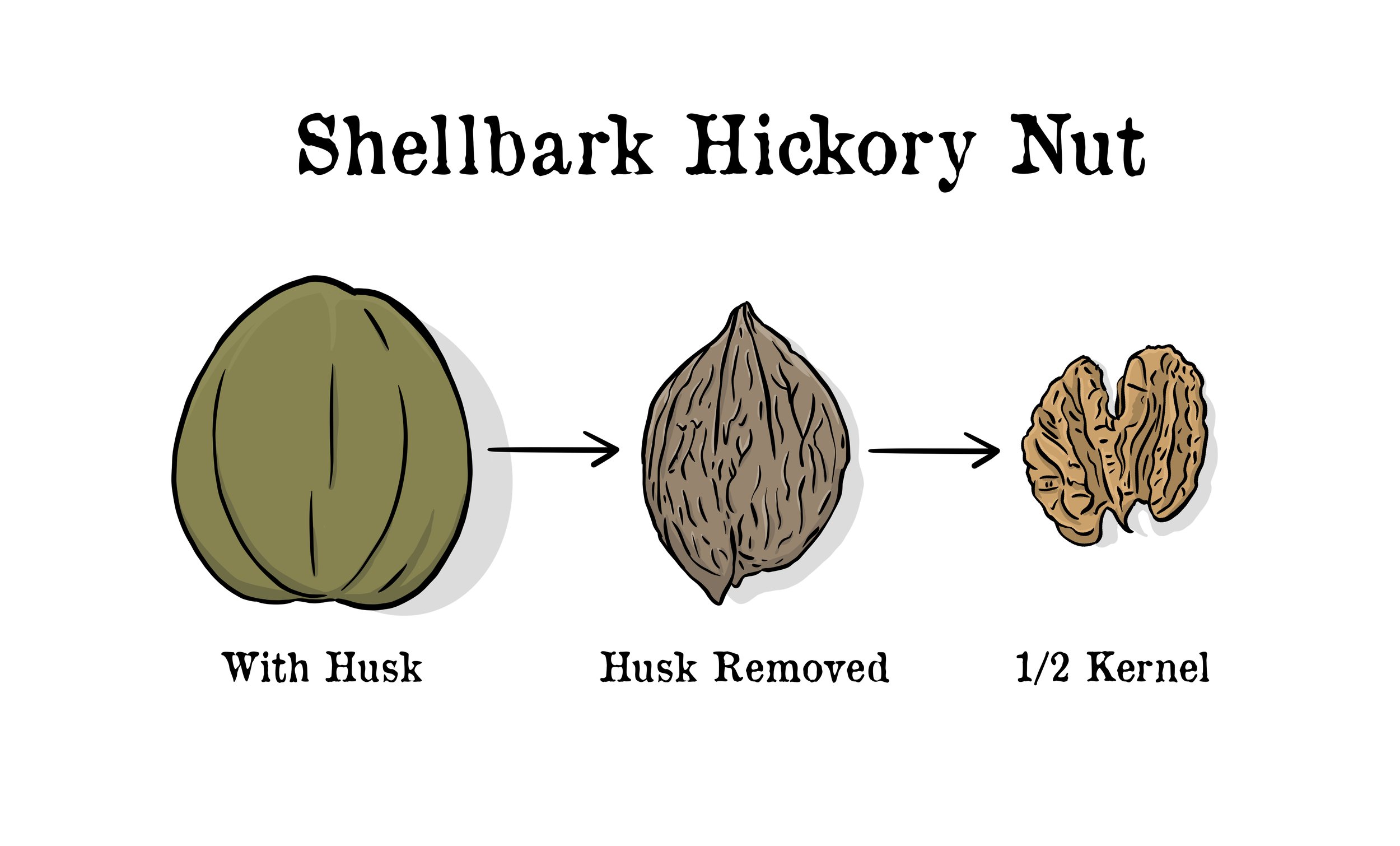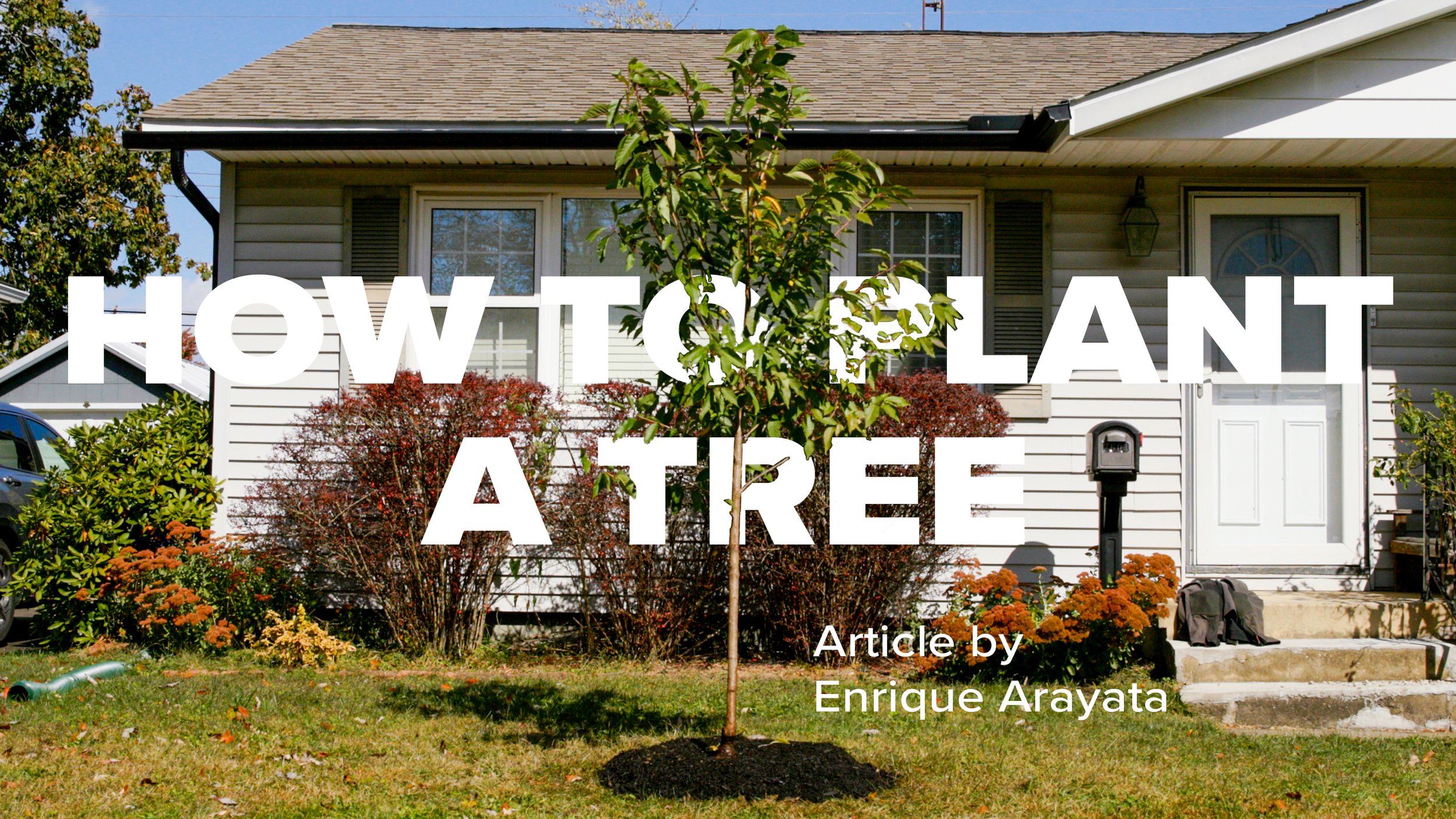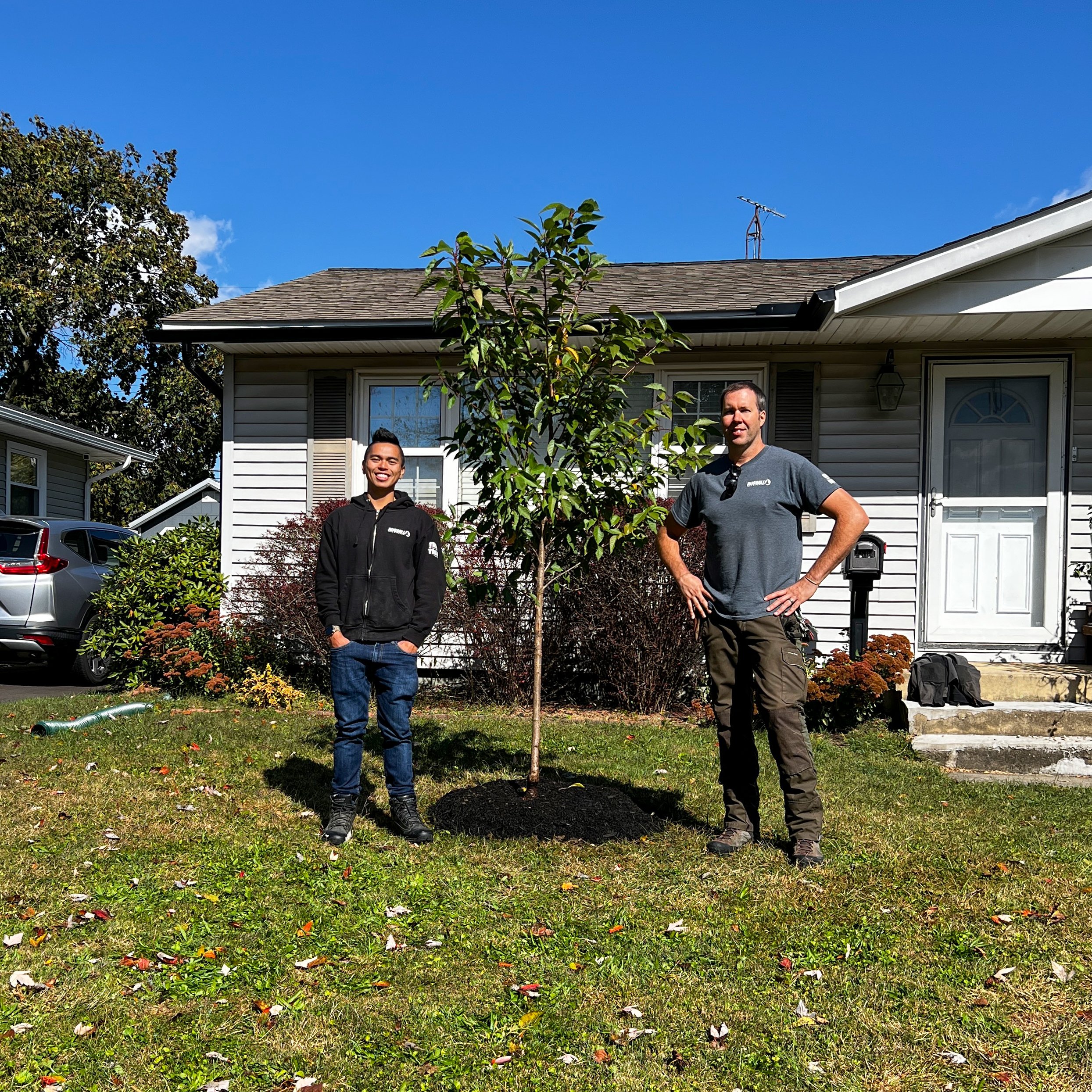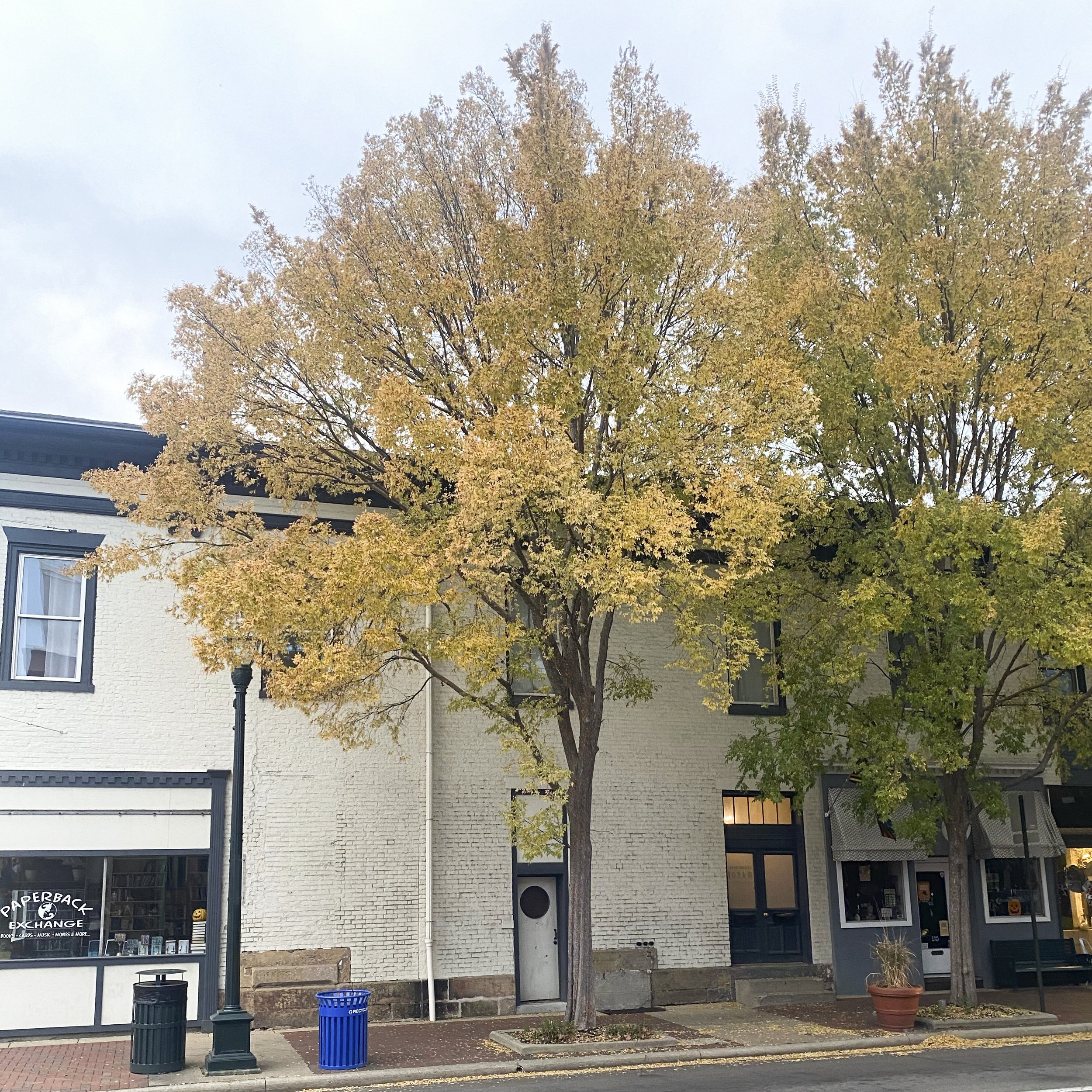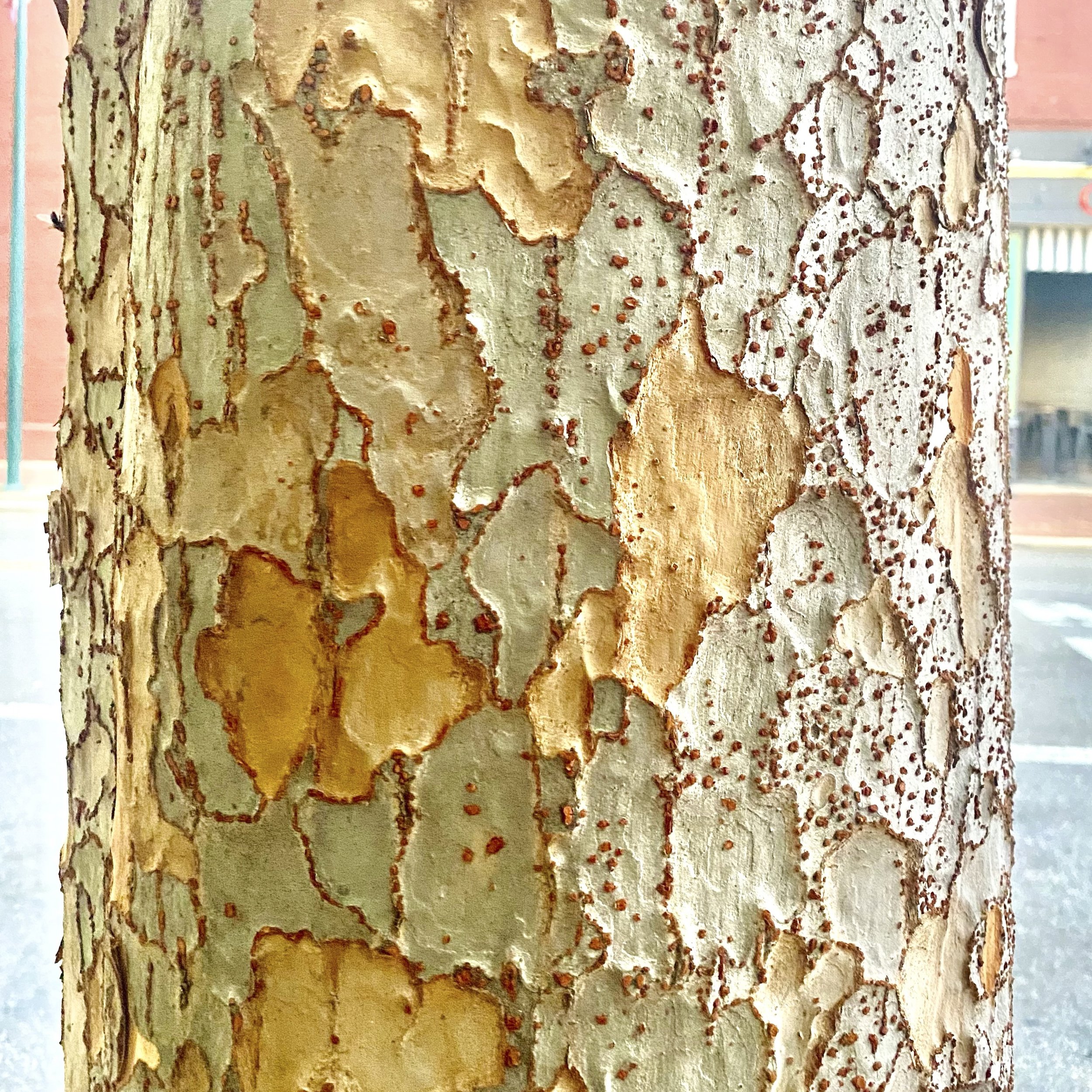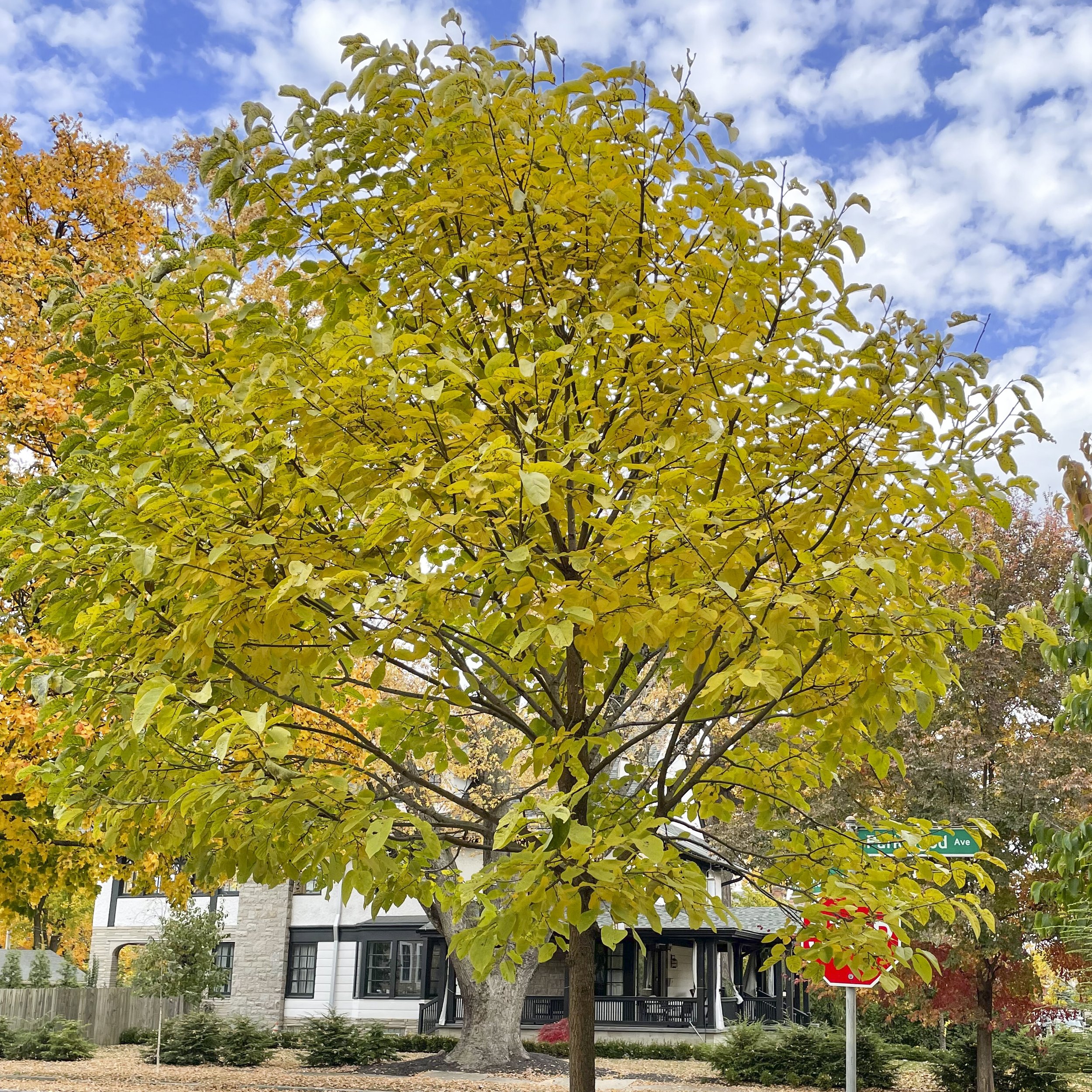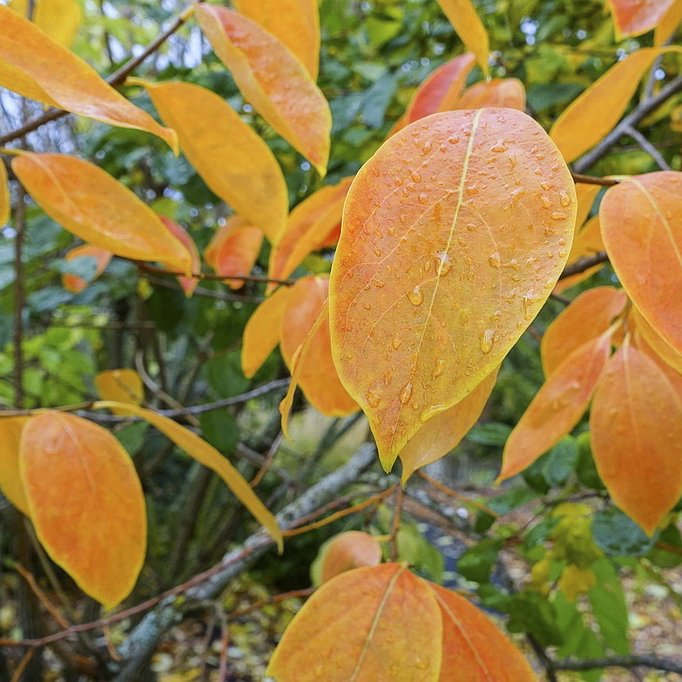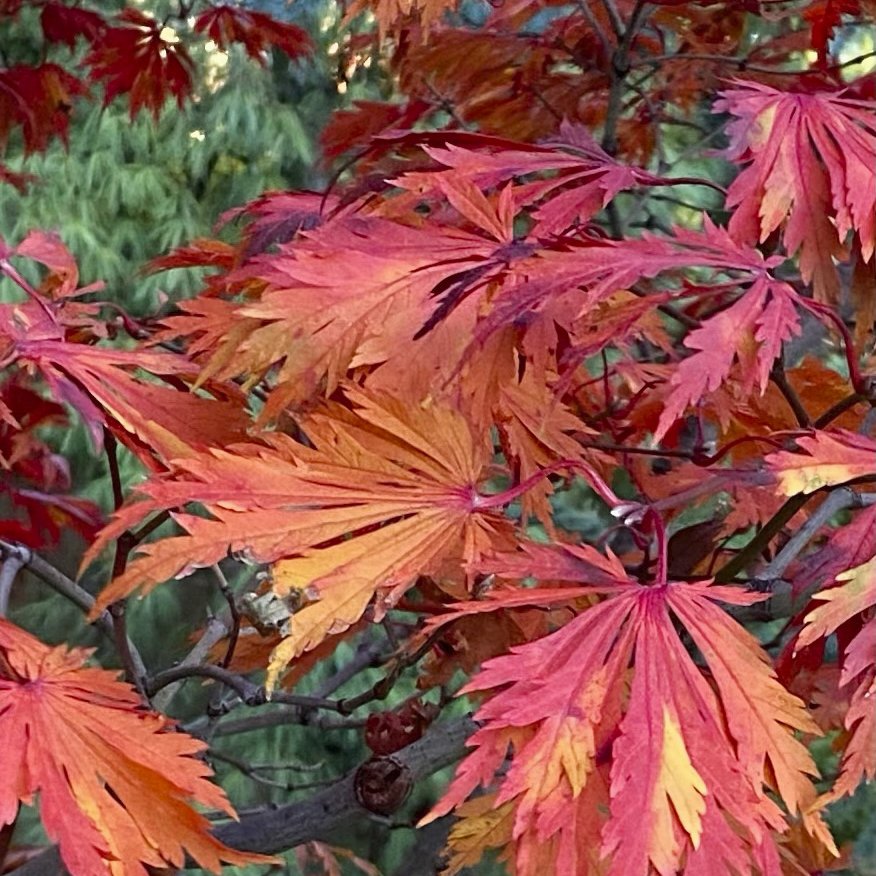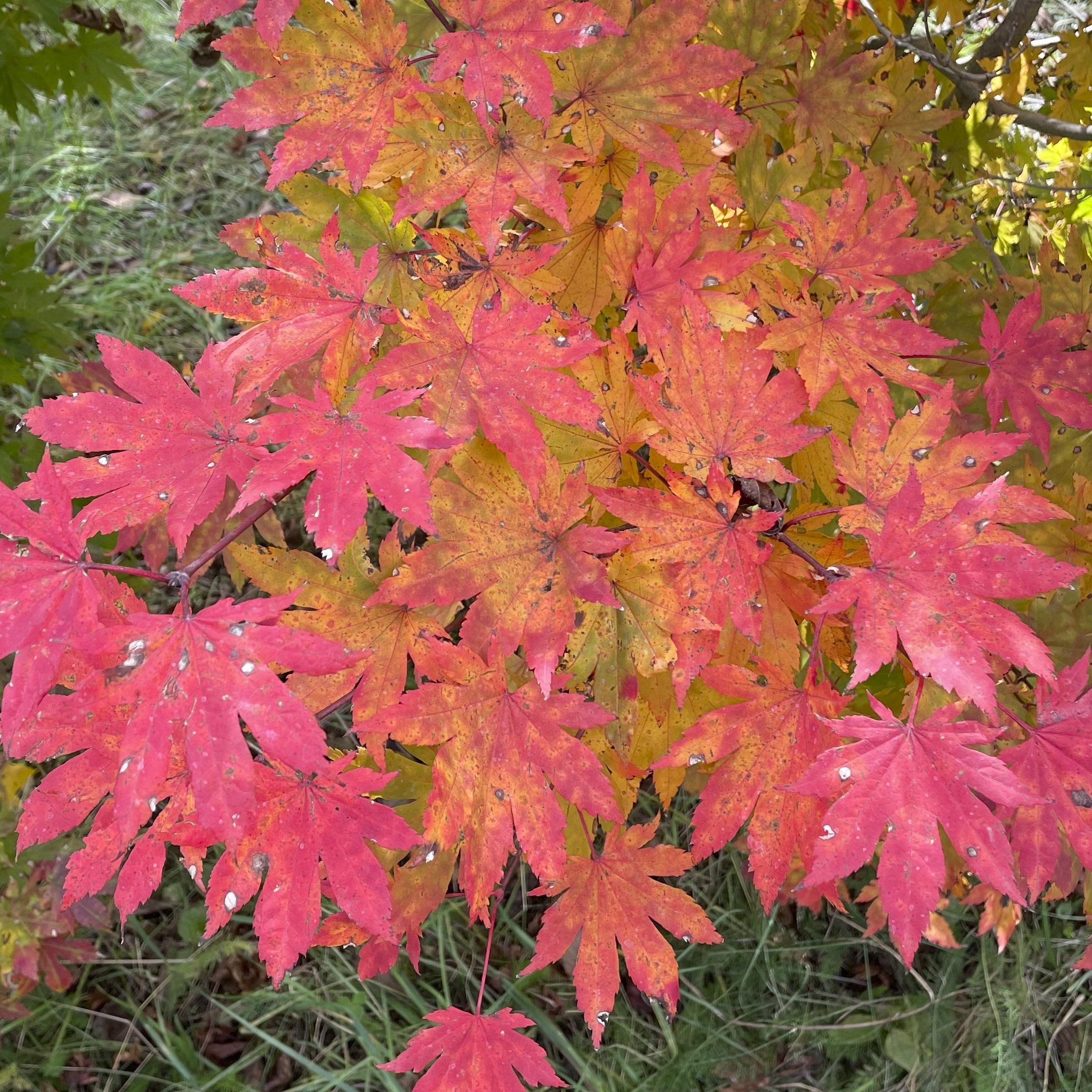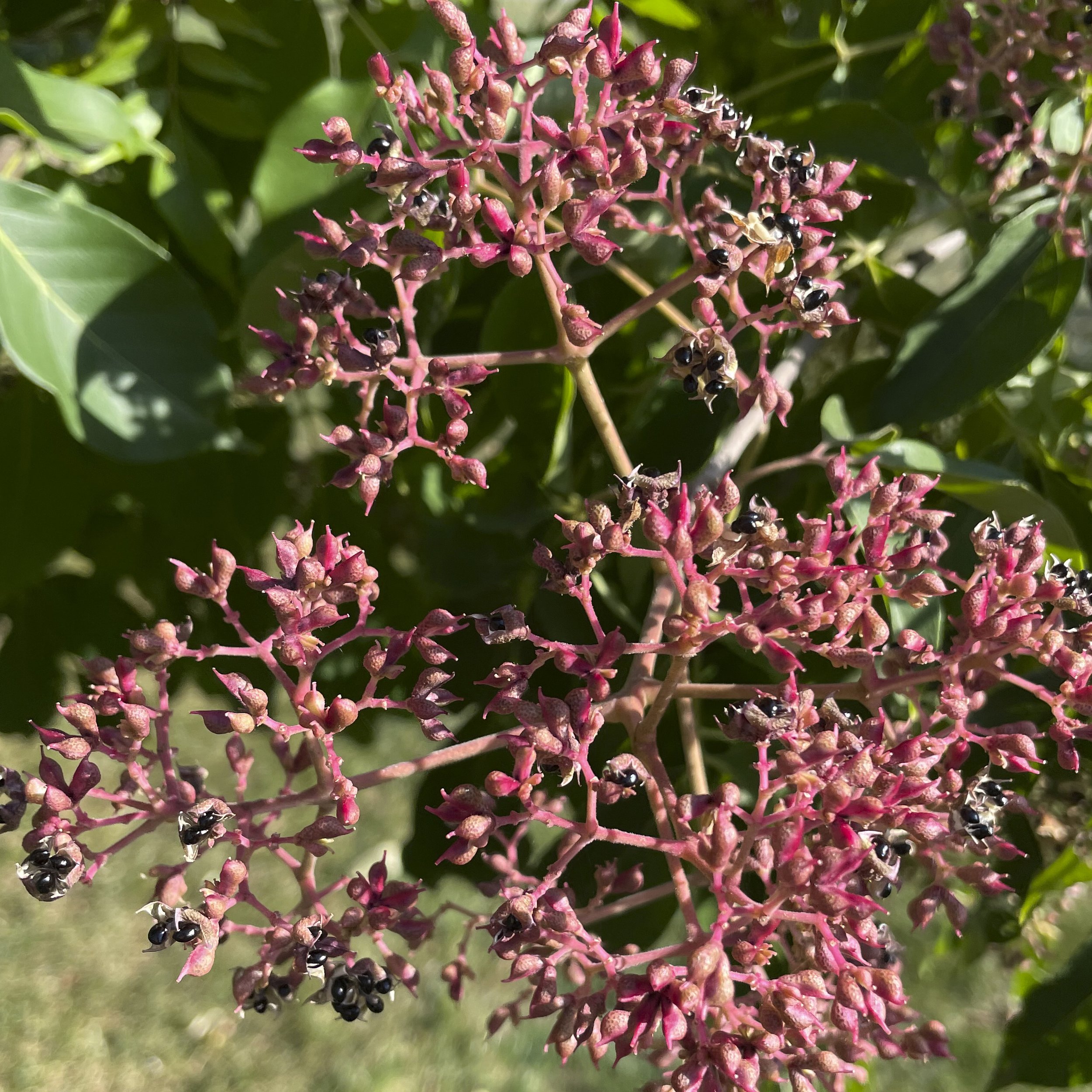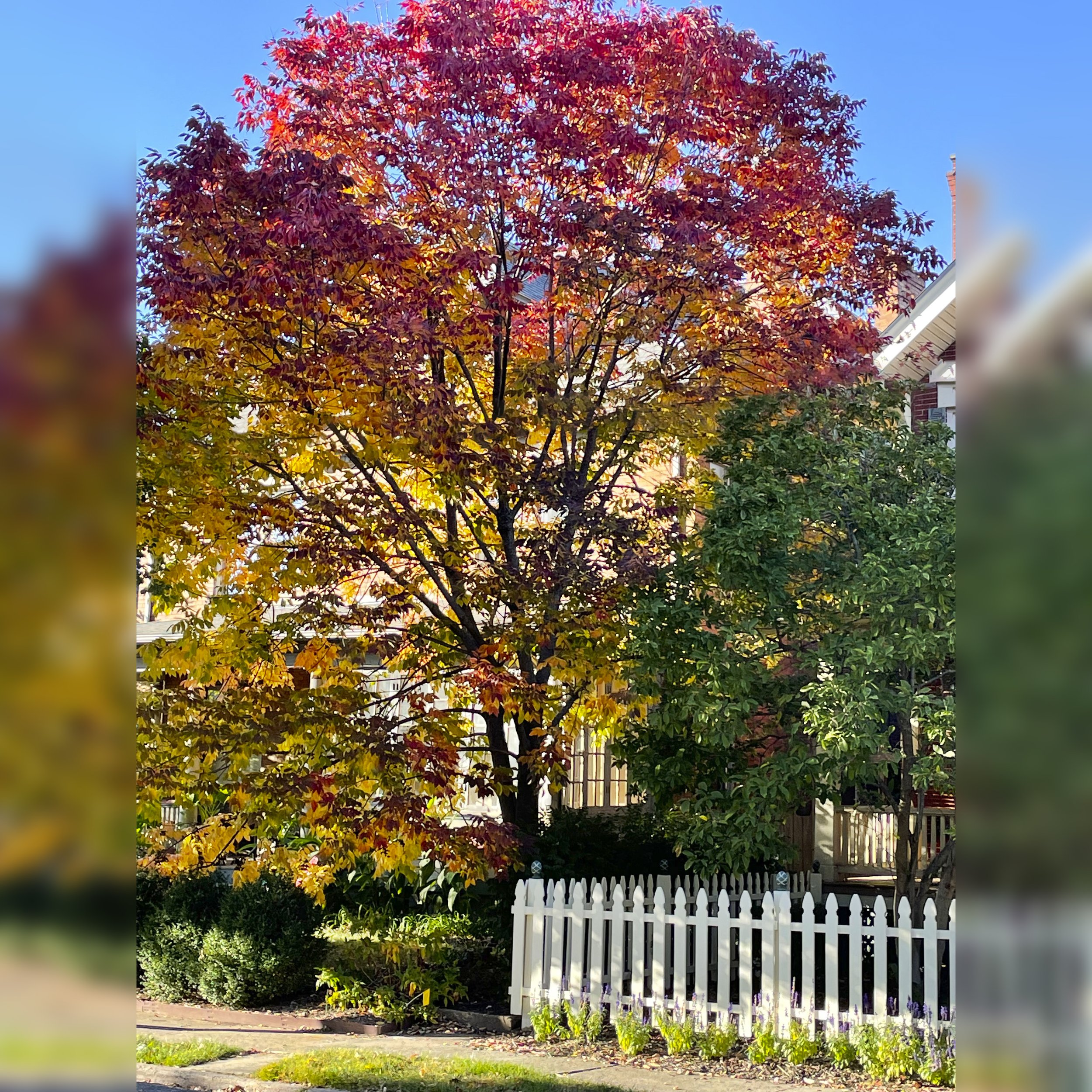In some cases, pruning trees in winter is actually more beneficial than during other times of the year due to increased canopy visibility and lower risk of disease. Check out the video above to learn more!
Why is Tree Pruning Important?
Dear Reader,
Tree care comes in many forms: insect and disease management, pruning, fertilization, cabling, lightning protection, and removals. Today I would like to talk about the importance of tree pruning and the various reasons why a tree may need to be pruned.
ISA Certified Arborist Andy Bartram making a tree pruning cut!
Tree pruning is the selective removal of branches from a tree with the general goal of improving the overall quality of the tree, whether it be for safety, health, structure, fruit and flower production, aesthetic appearance, and more. Some may view pruning as unnecessary as there are hundreds and thousands of beautiful, healthy, and unpruned trees out in the world that have grown successfully without human intervention. Although this is true, there are also many trees out in nature that are dead, dying, or unpleasant to look at. A native volunteer tree out in nature grew naturally from one of hundreds of seeds and competed with all the surrounding trees for resources. They are tough and independent and do not need any human assistance. However, the same cannot be said for a single tree or sapling planted by a human in a site where that tree might not have ever grown there naturally. These human planted trees often need extra care like watering, mulching, and fertilization in order for them to be strong and healthy.
Planting a tree sapling for our TREE FOR A TREE® program.
“Pruning” differs from “trimming” as pruning prioritizes a tree’s health and structure. Only the necessary limbs are removed and aesthetic appearance is a byproduct. With “trimming”, plants, shrubs, hedges, and trees are trimmed with the goal of improving their appearance. Depending on the individual trimmer, health and structure may be sacrificed in order to attain a certain look.
Andrew Schneider making a tree pruning cut!
A tree may need to be immediately pruned if it poses a safety concern. If there is a large or dead limb overhanging something significant such as a house, car, sidewalk, or valuable lawn decoration, that limb may need to be removed as it could be hazardous during a storm.
ISA Certified Arborist Mac McGuire pruning a dead limb overhanging a busy road.
If there are any limbs with clearance issues, it may also need to be removed. This applies to limbs that are touching any house siding or utility lines or any low hanging limbs that impede lawn activities or pulling into a driveway.
Another important aspect of tree pruning is for health and structural reasons. A tree’s overall health and structure will increase by removing any dead, dying, damaged, disease-infected, codominant, or crossing limbs. Removal of these limbs promotes new growth and increased flower and fruit production. When a tree is pruned, nearby trees, shrubs, plants, and grass can also benefit by receiving more resources like sun, water, and air. These additional resources can improve aesthetic appearance and promote new growth. If the pruned tree was also close to a window you may even have a better view from inside your house or more sunlight coming in during the day!
Unruly lilac in need of pruning.
As mentioned earlier, tree pruning can improve aesthetic appearance. Pruning does not focus on looks but removing dead, dying, broken, weak in structure, or clearance-issue limbs generally makes trees look neater, cleaner, and overall better. The pruned tree may not have a specific shape desired by an individual, but it will be healthier and safer. Another small factor to potentially consider is property value. An unmaintained tree can look unpleasant, unruly, and unsafe which can hurt the value of a property. When it comes time to sell, having a beautiful, healthy, and pruned tree can potentially increase property value, making it an easy worthwhile investment!
So now that you have read about the various reasons for tree pruning, you may be wondering when a tree should be pruned, how often should a tree be pruned, or how much of a tree should be pruned? The short answer is that it depends. Some trees are best pruned during a specific season and some may have no preference. For example, oak trees are not recommended for pruning from roughly April to October due to the risk of oak wilt. A sugar maple can generally be pruned any time of the year, but it is recommended that you prune a sugar maple during the summer rather than winter to avoid sap leakage from pruning wounds, which does not pose any significant problem to the tree’s health.
Multiple water sprouts shooting straight up from a larger branch due to stress.
In terms of frequency, younger trees may need to be pruned every two to three years while more mature trees may need to be pruned every three to five years. The specific timing can fluctuate and vary based on planting site, climate conditions, potential insect and disease issues, and more. In terms of how much to prune, there should be no specific goal. Only remove the necessary branches. However, a general guideline is that no more than 25% of a canopy should be removed at one time as the tree may “go into shock” and grow watersprouts in an attempt to replace the stored energy lost from the removed branches.
If you decide to have your tree pruned, two incorrect methods of pruning that Russell Tree Experts and I strongly advise against are tree topping and lion’s tailing. Tree topping is pruning to create a rounded canopy that often requires cutting through a stem at an improper location. Lion’s tailing is the removal of many, if not all, secondary or tertiary branches from the interior of the crown, leaving most of the foliage at the edge or top of a canopy. Although the look of both of these tree pruning methods may be desired by a specific individual, they do not improve the overall health or quality of a tree and can actually shorten its lifespan and promote decay.
Examples of improper tree pruning: Tree topping (left) and lion’s tailing (right)
Tree pruning is a very large and vast subject with much to cover. Someone could write a novel about tree pruning and still not cover every single detail. The goal of this article was to discuss the many reasons for tree pruning, not necessarily to teach someone how to become a tree pruning expert. However, we do have an article and a video on the 3 cut method that will be linked down below for anyone interested in learning how to safely and effectively remove a limb! A few additional tree pruning-related articles will be linked down below as well.
Interested in Pruning Your Own Tree?
Check out these other Arbor Ed articles!
The Value of Trees in the Urban Landscape By Chris Gill: https://www.russelltreeexperts.com/arbor-ed/2018/9/18/the-value-of-trees-in-the-urban-landscape?rq=tree%20pruning
Preventing Tree & Property Storm Damage By Chris Gill: https://www.russelltreeexperts.com/arbor-ed/2018/8/14/storm-damage?rq=tree%20pruning
Where’s the Fruit? By Krista Harris: https://www.russelltreeexperts.com/arbor-ed/2021/2/1/wheres-the-fruit?rq=tree%20pruning
Stop! Don’t Top! By Chris Gill: https://www.russelltreeexperts.com/arbor-ed/2018/10/9/stop-dont-top?rq=tree%20pruning
Sincerely,
Enrique Arayata I Media Production Coordinator, Russell Tree Experts
Enrique is a fourth year student at The Ohio State University majoring in moving image production with a double minor in film studies and photography. In his free time, he enjoys fitness, video games, technology, cars, videography, photography, and cooking.
Are Hickory nuts better than Pecans?
Are Hickory nuts better than Pecans? A Journey by T.J. Nagel
We have six native species of Hickory in Ohio: Bitternut hickory (Carya cordiformis), Pignut hickory (Carya glabra), Red hickory (Carya ovalis), Mockernut hickory (Carya tomentosa), Shagbark hickory (Carya ovata) and Shellbark hickory (Carya lacinosa). Some folks believe that Pecan (Carya illinoinensis), another hickory, is also native to the Southwestern portions of Ohio. Others maintain that it has only naturalized. I personally am indifferent.
In any case, I’ve recently become interested in learning more about the subtle differences between these seven species. I want to be able to confidently identify them by their habit, bark, nuts, and buds, regardless of the season. As I have researched and explored the woods for these different trees I have decided that Shellbark Hickory is my favorite. I could elaborate further but the goal of this article is to tell you about Shellbark Hickory pie so I’m going to skip ahead.
Shellbark Hickory (sometimes called Kingnut Hickory) is a slow-growing and long-lived shade tree reaching heights of 70 - 80’ at maturity with a spread of about 40’. In Ohio, I find it naturally in bottomlands and floodplains although I’ve observed it performing well in parks and landscapes as well. It has large, 1 - 2’ long pinnately compound leaves that are dark yellow-green turning a nice golden yellow color in the Fall. The bark is shaggy, almost identical to the bark of its relative, Shagbark hickory, and the two species can be quite difficult to distinguish from one another. The two trees are so similar that I’ve noticed many folks will erroneously refer to their Shellbark Hickory as a Shagbark. I also realized recently that many of the “Shagbark hickory” I have grown up with are in fact Shellbark.
In a nutshell (pun intended), there are 3 subtle differences I use now to be able to tell the Shellbark and Shagbark hickory apart:
A Shellbark hickory leaf generally has 7 leaflets compared to the 5 leaflets of a Shagbark hickory leaf.
The terminal bud of Shellbark hickory is significantly larger than that of Shagbark Hickory
The nut of Shellbark hickory is also much larger than Shagbark, measuring 2 ½ - 3” in diameter compared to the 1 ½ inch diameter of Shagbark.
A few more interesting facts: Shellbark hickory is also a great tree for wildlife. The nuts are sweet and edible and are relished by deer, fox, rabbit, squirrel, wild turkey, ducks, and bears. Interesting side note: my dogs also love Shellbark hickory nuts. The flowers, although inconspicuous, provide nutrition for bees in the Spring as well. And historically, early settlers used Shellbark hickory nuts as a source of food as well as the tree itself for making furniture, tool handles, lumber, and fuelwood. This reminded me of the history of the American chestnut and really got me excited.
My girls this summer at the site of my best producing Shellbark hickory - note all the nuts ready for harvest in the driveway.
As I read more and spoke with more people about the merits of Shellbark hickory, I found that a lot of folks preferred this nut over the flavor of pecan. Some even claimed that Shellbark hickory was a far superior nut and that Pecan had become famous only because it has a thinner husk and thinner shell and is an easier nut to clean. Now, this is a bold statement. Folks in Texas might even consider these fighting words. I knew that I needed to form my own opinion. I decided I would make Shellbark Hickory pie for Thanksgiving.
This pie-making project started with identifying a stand of Shellbark hickory in the woods near my office in Westerville. Between mid-August and mid-October, my father, dogs and I made several weekend trips to this stand of trees to collect Shellbark hickory nuts. Most of the nuts we collected from the ground but some we picked from the trees with a pole pruner. Over the course of 2 months, we collected approximately 20 gallons of Shellbark hickory nuts. This coincided with paw paw season (Asimina triloba) which made our walks in the woods even more rewarding (next year I’m making paw paw hickory pie).
By mid-October Dad and I knew we would need to start cleaning our bounty if we were to have pies by Thanksgiving. The art of cleaning Hickory nuts by hand is a slow art and rushing will only ensure that you eat lots of shells.
Our Hickory nut cleaning process was simple - Dad used a screwdriver and a hammer to remove the hickory nuts from the husk and I used the Cadillac of nutcrackers I purchased on Amazon to crack the shells. From here we used pliers, vice grips, and even dental tools to get the kernel (the edible part of the nut) out of the grooves and different crevices of the shell. We spent 3 separate weekends perfecting our nut-cracking skills and in hindsight, I wish I had kept time so I could compare our speed to next year. The process was at least as long as three OSU games and the entire Cat Stevens discography.
Approximately one-third of our hickory nut kernels were either dried up, infested with weevil larvae, or rotten. These went to the compost. Most of the remaining kernels went into a couple of mason jars and were placed in the freezer until we had time to bake. Anything questionable was set aside for the squirrels. From our original 20 gallons of nuts, we scored about 6 cups of edible Shellbark hickory kernels. This would be enough to make 4 pies.
The following is my recipe for Shellbark hickory pie:
On Thanksgiving day I arrived at my inlaw’s table with two freshly baked Shellbark Hickory pies. I was delighted to see that my sister-in-law had also brought a homemade Pecan pie. I realized that this was the moment I had been waiting for. Today all my questions would be answered. After two helpings of the usual thanksgiving fixings, I made my way to the dessert table and cut myself two equal-sized pieces of pie. One Shellbark Hickory and one Pecan. I covered both with equal amounts of whipping cream and returned to the table. First I had a bite of Pecan. I chewed it slowly and swallowed and then took a sip of water to cleanse my palate. Then I had a bite of Shellbark Hickory. Rinse and repeat a dozen or so times and here are my final thoughts.
I like pie
My sister-in-law’s Pecan pie was prettier than my Shellbark hickory pie with all of the perfectly formed pecans laid out on the surface in a perfect basket weave configuration.
Despite our best efforts, the Shellbark Hickory pie had more shell pieces in it than the Pecan pie.
The flavor of the Shellbark Hickory Pie and Pecan pie was very similar - so much so that most folks would probably not be able to distinguish one from the other if they were not eating them simultaneously.
I think I preferred the flavor of the Shellbark hickory pie but I could be biased after everything we've been through together.
Pecan pie was a delicious and worthy opponent and I mean no disrespect to my sister-in-law or her pie-making abilities.
In all seriousness, I think what really makes Shellbark Hickory superior to Pecan for me is its local proximity (to me), having a knowledge of and a relationship with the trees that the nuts have come from, and all of the memories of my father and I together picking them.
I am in the early stages of my Hickory infatuation and still have lots to learn. If any of you possess any hickory stories, fun facts, or recipes please share them with all of us - you can do so at the bottom of this article. I have one last interesting Hickory side note to share:
I randomly stopped at Watts Restaurant in Utica, OH this Fall while working in the area. If you haven’t had the pleasure of dining there, I encourage you to do so. Watts restaurant is a staple in the Utica community. It has been around for over a hundred years and survived two pandemics so they must be doing something right. They make a number of tasty and authentic family-style country recipes and serve a number of home-baked goods including Hickory nut pie. I bought a Hickory nut pie from them to take home and decided within a couple of bites that it was better than mine. I decided I would go back to Watts Restaurant and ask more questions. I wanted to know primarily (1) what species of hickory they were using in their pie and (2) where were they sourcing their hickory nuts. Might they be from local trees or were they buying them from a faraway land?
When I returned to Watts recently to ask about their Hickory nut pie I discovered that most of their baked goods are actually brought in from Hershberger’s Bake Shop, an Amish wholesale bakery in Danville, OH. For the record, Watts Restaurant does make all of its own cream pies in-house and they are equally delicious! But I still had unanswered questions so I decided to drive to Danville and make a visit to Hershberger’s Bake Shop.
I arrived at Hershberger’s Bake Shop on a cold afternoon this week but received a warm welcome from Naomi Hershberger and two of her colleagues who definitely were not expecting to see a Russell Tree Experts truck come down their driveway. I shared with them my love of Hickory trees and affinity for Hickory pie and that I had happened across their Hickory pie in Utica and that it was better than mine. They were patient with me and answered all of my questions and this is what I learned:
The Hershberger’s are far better at baking delicious pies than tree identification and had no idea what species of hickory nut they were using in their Hickory nut pie (after careful dissection I believe it is a mix of Shagbark and Shellbark).
The hickory nuts are collected locally from native trees in Knox and Holmes counties, Ohio.
They make Hickory nut pie most of the year.
They deliver new pies to Watts Restaurant in Utica every Tuesday and Friday but only a couple of Hickory nut pies each time.
So if you want to try Hickory pie but don’t have time to collect and clean the nuts make a trip this Winter to Watts Restaurant, 77 S. Main St. Utica, OH 43080. I recommend the chicken and noodles over mashed potatoes and a Hickory nut pie to go.
TJ Nagel | Scheduling Production Manager, Russell Tree Experts
ISA Board Certified Master Arborist® OH-6298A // Graduated from The Ohio State University in 2012, Earned B.S. in Agriculture with a major in Landscape Horticulture and minor in Entomology // Tree Risk Assessment Qualified (TRAQ) // Russell Tree Experts Arborist Since 2010
How to Plant a Tree
Dear Reader,
Today I would like to discuss step-by-step how Board Certified Master Arborist TJ Nagel plants a tree! He very kindly planted a kwanzan cherry tree for me at my house that was donated by him, Cindy, one of our office managers, and Mark, our fleet manager! At the bottom of this article is a YouTube video where you can visually follow along!
THE STEPS
First, pick out a tree! TJ and I went to Oakland Nursery and selected a kwanzan cherry tree. To help in the planting process, we brought mushroom compost, mulch, a trowel, a shovel, and a pickaxe. Mushroom compost will help enrich the soil. Mulch will help with water retention, temperature regulation, protection from lawn mowers, and curb appeal. A trowel, a shovel, and a pickaxe will help in the digging process.
Choose a tree planting site! We chose in front a picture window in the front yard for viewing pleasure and as it was a few feet away from any obstructions such as my neighbor’s driveway, the sidewalk, my front porch steps, and nearby plants. We also knew that we were not planting directly on top of any pipes or water lines.
Dig your hole! The hole should be slightly wider but just a few inches shallower than the size of the tree’s pot. You will want a couple extra inches around the circumference of the root ball to pack in compost and dirt. We also like to plant most trees a few inches above the surrounding ground level as the tree could settle over the next couple of years, which is why the hole can be a few inches shallower than the depth of the root ball.
Take the tree out from the pot and cut 4 straight lines across the root ball. This will break up and loosen both the dirt and roots which will help minimize the risk of stem girdling roots. Optionally, you can also clean up and remove any small or entangled surface roots.
Test fit your tree and check if the hole’s depth is adequate. As mentioned earlier, you will want a few extra inches of space around the circumference of the tree and you will want the tree to sit a few inches above the surrounding ground level. Make adjustments to your hole if needed.
Mix up the mushroom compost with the existing, dug up soil with an approximate 1:1 ratio to help enrich the soil and promote growth. You can break up any chunks of dirt to obtain a fine, well blended mixture. If a few grass blades end up in the mixture, it is okay as it will decompose and help enrich the soil with nutrients. As long as there is no significant sod or roots on the surface, there should be no significant risk of weeds. To further minimize the risk of weeds and for aesthetic purposes, we will be placing mulch over top of the soil.
Place your tree in the the hole and fill it with your blended soil mixture! Be sure to keep your tree straight and upright while filling in your hole. You will want to lightly compact the soil mixture so that way the tree is stable during windy weather and does not lean or fall over.
Water the soil!
Apply a couple inches of mulch on top of the soil! Keep the trunk exposed and not covered with soil and also avoid creating a mulch volcano in order to minimize the risk of stem girdling roots. We shaped a small, subtle and almost unnoticeable moat around the perimeter of the elevated soil level to help water flow and soak towards the trunk.
Water the mulch!
And voila, your tree is now planted! Or in this case, this beautiful kwanzan cherry tree is now planted! If there are any tags on the tree, you can remove them now if you have not done so already. Optionally, TJ also made a few minor pruning cuts but this is not always necessary.
The first year is vital for a newly planted tree’s survival so make sure that it does not lean over, that it does not get chewed on or rubbed by any animals like deer, and that it gets properly watered, which can be once to twice per week depending on the season, your local climate, and the way the tree is packaged. You can optionally use a tree trunk guard or posts to help protect your tree and keep it straight but it may not be necessary depending on where you live.
I personally would like to give the hugest shoutout to TJ, Cindy, and Mark for donating and planting this tree. Earlier this year, my sister passed away and she loves kwanzan cherry trees. She loves their spring colors, has posters and images of them in her room and on her phone, and uses the Japanese cherry blossom scent for all her Bath & Body Works products. This sentiment is incredibly touching and meaningful and I cannot be more appreciative.
As mentioned earlier, linked down below is a step-by-step YouTube video you can follow along with as well as a few related tree planting articles! Hopefully you found this article educational and entertaining!
HOW TO PLANT A TREE BY AN ISA BOARD CERTIFIED MASTER ARBORIST
ADDITIONAL READS
“How to Mulch Around a Tree”
by Enrique Arayata
“10 Trees with Amazing Fall Color… And One You Should Avoid!”
by TJ Nagel
“Why Can’t I Plant a Tree Just Anywhere?”
by Enrique Arayata
“Planting Trees for a Purpose”
by Mike McKee
Sincerely,
Enrique Arayata I Media Production Coordinator, Russell Tree Experts
Enrique is a fifth year student at The Ohio State University majoring in moving image production with a double minor in film studies and photography. In his free time, he enjoys fitness, technology, cars, videography, photography, and cooking.
10 New Fall Favorites
This has been a great year for Fall color! The color has lasted longer than any previous season I can remember. Most of us Fall fans are familiar with and look forward to the standard maples, oaks, and hickories. Although these have all been beautiful this year, over the past several weeks I’ve noticed several additional color contenders that deserve their opportunity in the Fall garden spotlight. This article is dedicated to them.
➊
Sourwood
Oxydendrum arboreum
On my way to the Paw Paw Festival in Athens, Ohio on September 16th I noticed several groves of Sourwood along the hills of U.S. Route 33 in all their red Fall glory. And while hiking the trails of the hocking hills toward the end of October I was pleasantly surprised to see Sourwood still holding onto most of its red Fall foliage. In the landscape Sourwood is generally a small, slow growing pyramidal tree, flowering mid summer with white bell shaped flowers that remind me of Lily of the Valley. The flowers and attractive fruit persisting late into the season along with its interesting bark texture at maturity make this a great tree for all seasons. In Fairfield, Hocking and Athens counties I observed trees that were 40’+ in height. NOTE: Well drained and acidic soil is a must for this tree to thrive - Not suited for the average urban landscape without thorough efforts to amend the soil to its liking.
➋
Sawtooth Oak
Quercus acutissima
What a great tree! I’m seeing Sawtooth oak gradually getting used more as a street tree by different municipalities and also as a front yard specimen in the landscape. I’ve planted some for neighbors in my community and continue to be impressed with the merits of this tree. Sawtooth oak has great form, moderate to fast growing speed, abundant acorn crop for wildlife and nice Fall color. The leaves are a lustrous dark green all summer before during a brillant golden bronze in the Fall. Not one of our native oaks but definitely a tree to consider if you are in the market for a fast growing, beautiful medium sized shade tree.
➌
Persian parrotia
Parrotia persica
Full disclosure, this is probably my favorite deciduous tree. If I could only have one tree in my yard, this would be it. This exotic (non-native) member of the Witchazel family is a head turner year round with its glossy green foliage, interesting bark character, pink late Winter flowers and outstanding Fall color. The nursery industry has selected dwarf cultivars (cultivated varieties) , upright cultivars, variegated cultivars and even a weeping cultivar so there truly is a parrotia suitable for every landscape. This year the Fall color on my parrotia was a mix of yellow, orange, red and purple.
➍
Lacebark Elm
Ulmus parvifolia
This underutilized tree produces noteworthy Fall color ranging from yellow to pink to reddish purple. A very easy to grow medium sized tree, adaptable to most sites and soils. The mottled exfoliating bark character makes this tree stick out in the landscape year around. The columnar cultivar ‘Dannaspire’ and variegated cultivar ‘Mottled Molly’ are two of my favorite selections of this tree.
➎
Moraine Sweetgum
Liquidambar styraciflua ‘Moraine’
There can be a lot of variation in the Fall color of Sweetgum trees. The nursery industry has selected several cultivars for more reliable Fall color. Sweetgum can get a bad rep for its messy fruit but when I recently happened across a planting of Moraine Sweetgum while working on a street in Westerville, I realized what all the excitement is about! In central Ohio, the glossy dark green foliage turns to a vibrant mix of yellow, orange, red and burgundy in October!
➏
Paw Paw
Asimina triloba
If you are looking for a small exotic looking tree that provides a tasty late season treat then look no further. This easy to grow, native tree, and Ohio’s official state fruit, is adaptable, has attractive Spring flowers AND beautiful golden yellow to orange Fall color. Paw paw can make a great street tree or ornamental for smaller spaces. This year my grove of Paw Paw (which are planted as 3 consecutive street trees) produced fruit from Late August into early October.
➐
Persimmon
Diospyros virginiana
Another great native, medium to fast growing, urban tolerant and adaptable tree with edible fruit. Fall color can be yellow to reddish purple. This year some smaller seedlings in my yard developed a nice orange color while my larger street tree turned a handsome yellow.
➑
Gray Dogwood
Cornus racemosa
I have never paid much attention to this plant over the years but stumbled across an attractive grove recently while taking a walk in Franklin park. The white fruits really stood out on the dark green turning burgundy foliage. Gray dogwood is native and makes a great shrub border/screen. I have also noticed other specimens recently that have been pruned to form a small tree.
➒
Fullmoon maple & Korean maple
Acer japonicum & Acer pseudosieboldianum
I happened upon these two trees several years ago while at a nursery in Lake county and they have been on my mind ever since. If you want a hardier and interesting alternative to the more commonly used Japanese maple (Acer palmatum), consider these two trees. The leaves have a wider palm and a reliable intense Fall color.
➓
Korean Evodia
Tetradium daniellii
The city of Columbus has used Korean Evodia as a street tree along parts of Long street on the near east side. And this pictured specimen is thriving in the main parking area of the Franklin Park Conservatory. Very adaptable and medium to fast growing, this is a true summer flowering tree that provides for pollinators from June through August, sometimes referred to as the bee tree for this reason. The Fall foliage can be a decent yellow but the REAL fall show is the red to black shiny fruits that arrive late August and persist well into November. NOTE: Korean Evodia could be difficult to source but is definitely worth the search.
☆Bonus☆
White Ash
Fraxinus americana
I am so happy that we still have some nice Ash trees around town. Once as common a Fall sight as Sugar maple, the number of noteworthy White ash specimens I see in the Fall in central Ohio has been dramatically reduced by the insect pest Emerald Ash borer. When I happen upon a new healthy/vigorous Ash tree (of any species) that I haven’t seen before it makes me feel warm and fuzzy. Ten years ago I was getting calls about Ash trees every day - today it is a rarity. Here are a couple nice White ash I’ve noticed around town this Fall. Kudos to everyone who has worked diligently to help preserve this important genus.
TJ Nagel | Scheduling Production Manager, Russell Tree Experts
ISA Board Certified Master Arborist® OH-6298A // Graduated from The Ohio State University in 2012, Earned B.S. in Agriculture with a major in Landscape Horticulture and minor in Entomology // Tree Risk Assessment Qualified (TRAQ) // Russell Tree Experts Arborist Since 2010
TJ X BCMA®
The Double Tree of Casorzo
Between Casorzo and Grana in Piemonte, a region in northwest Italy, there is a cherry tree growing healthily on top of a mulberry tree with branches spreading over 5 meters long. This tree, or should I say, these trees, are known as the Double Tree of Casorzo (Bialbero de Casorzo in Italian) or the Grana Double Tree.
Asian Trees for the Ohio Landscape [Part 3]
Asian Trees for the Ohio Landscape [Part 2]
Asian Trees for the Ohio Landscape [Part 1]
In Ohio and much of the Midwest, many of the non-native trees and shrubs that can be found in the landscape are Asian in origin, due to the similar climate we share with that region of the world. This gives us a great opportunity to expand our options beyond native trees and shrubs when selecting suitable replacements or additions to our yards.
Right of Way: Understanding City-Owned Trees
Spotted LanternFly: THey are getting close
If you are among those of us in the tree or insect world, you’ve likely heard of the Spotted Lanternfly (SLF). This pest showed up in the Southeastern region of our neighboring state of Pennsylvania in 2014. This is an invasive sap sucking insect that has the potential to disrupt a variety of industries.
I Speak for the Trees
The 3 Cut Method
What's Wrong with my Sycamore & Maple?
"Why does my beautiful maple have ugly black spots on its leaves?" "Why is my American sycamore bare this year” …To answer these questions, we need to go back to a chilly, wet evening 5 weeks ago. On May 5th, the temperature dropped overnight to 41 degrees just after an early morning shower that day. We continued this cool, wet trend for 10 lousy days, and…
Brood X Cicada: Facts & Tips
Why Can’t I Plant a Tree Just Anywhere?
When I first began working at Russell Tree Experts as a video production assistant, I had no significant prior knowledge of arboriculture, and I never really understood the concept of tree planting. My overall impression was that trees are good for the environment as they provide oxygen, contribute to an ecosystem, and are visually pleasing to look at and enjoy.
Recap: Arbor Day 2021
Free Trees to Celebrate Arbor Day!
17
Seventeen years ago near this season I was starting my second year as an arborist in training. A few months more into the year and I would be applying to the ISA to sit for the Certified Arborist examination, which thankfully I would pass. At this point in my career, I was fortunate to be working under a foreman who was (and is) passionate about trees, so as I learned primarily about climbing and pruning, I was also being taught about CODIT, tree identification, and common tree pests and diseases.


